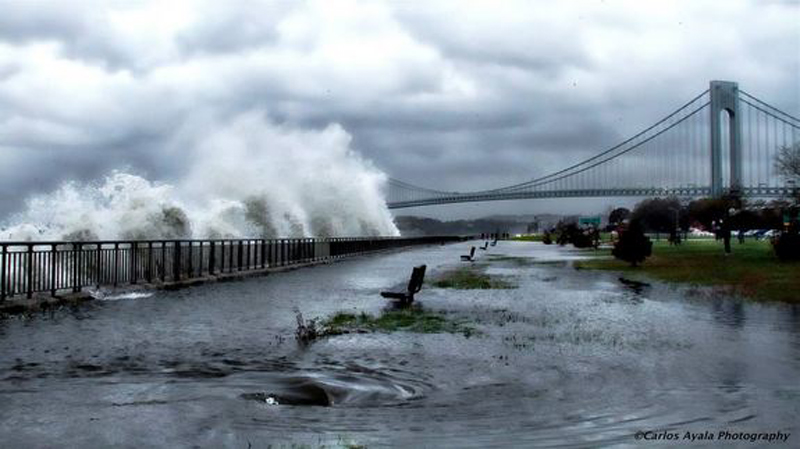Hurricane Sandy: A Tale of 2 Hospitals

In an emergency, few facilities are as critical as hospitals. But as Hurricane Sandy made painfully clear one year ago, hospitals and other health care facilities are just as vulnerable to the ravages of a storm as any building.
During Hurricane Sandy, major medical institutions in New York City — such as Bellevue Hospital Center, New York University's Langone Medical Center and Coney Island Hospital — had to be evacuated after multiple electrical and mechanical systems failed.
One year later, these institutions have had a chance to assess their performance before, during and after the storm struck. "We fared better than most," said Loyola Princivil-Barnett, administrator of the Shorefront Center for Rehabilitation and Nursing Care in Brooklyn. "We made sure we were stocked up to the wazoo." [On the Ground: Hurricane Sandy in Images]
Built for resilience
The Shorefront Center has received recognition from a number of experts for its success in weathering the storm punch that Sandy delivered — a remarkable fact, given that the 360-bed facility is located just a few yards from the Atlantic Ocean on Coney Island.
But Shorefront's resilience wasn't a matter of luck: Because of its seaside location, the facility was built in 1994 "to meet and exceed the 500-year floodplain by 3 feet [1 meter]," Princivil-Barnett told LiveScience. Although the parking garage is located at ground level, the lobby is elevated above it. "Our building is built on stilts," she added. "It's 30 feet [9 m] from our garage to the first-floor lobby."
Shorefront was so well prepared that it was able to assist other health care facilities by taking in their patients. "People came to us for everything under the sun," Princivil-Barnett said. Even the local police and other emergency responders came to the facility for coffee and other support.
Get the world’s most fascinating discoveries delivered straight to your inbox.
'Out of commission'
About 2 miles (3 kilometers) away from Shorefront stands Coney Island Hospital, a comprehensive 371-bed medical center with a large emergency department (ED), psychiatric-care facility and nuclear-medicine center.
Even though the hospital is farther inland than Shorefront, Coney Island Hospital fell victim to the devastation wrought by Hurricane Sandy's floodwaters. More than 220 patients had to be evacuated, partly because the hospital's ground-level emergency generators had to be shut off for several hours to prevent permanent damage from the flooding that inundated the whole hospital campus — including the ED — under several inches of water.
Nonetheless, the hospital was able to serve as an emergency shelter for about 60 displaced area residents — including four people and two dogs delivered by a police boat — according to a New York City report nicknamed "SIRR" (Special Initiative for Rebuilding and Resiliency), which was commissioned by the city in the aftermath of Hurricane Sandy.
One year later, most of Coney Island Hospital is fully operational, though there's still much work to be done. "If you were to go there today, you would still see parts under construction," Ian Michaels, public affairs director for the New York City Health and Hospitals Corp. (HHC), told LiveScience.
The psychiatric ED room at Coney Island Hospital "is out of commission," Michaels said, adding that those services are currently being addressed at the hospital's main ED space. Pediatric inpatient services, detox facilities and inpatient rehabilitation also remain unavailable at the hospital. "Otherwise, Coney Island [Hospital] is back, and has been back for a substantial period of time," Michaels said.
Preparing for the next storm
"There's been a flurry of activity over the last 12 months not only to repair, restore, rebuild and replace areas that were damaged, but also to be better prepared for the next storm," Alan D. Aviles, president of HHC, said in a statement. "We have worked within the guidelines of Mayor [Michael] Bloomberg's Special Initiative for Rebuilding and Resiliency to create an effective plan."
It takes much more than solid buildings to stand up to a major hurricane, experts agree, and Shorefront started planning for the storm days in advance. Communication, Princivil-Barnett said, is a critical concern. "That's been a big part of our planning," she said. "We have a good communication structure."
Princivil-Barnett and other team leaders were prepared to use satellite telephones to communicate during the emergency, since ordinary cellphones may be ineffective in a blackout. But beyond technology, there are commonsense initiatives that help make communication networks run smoothly.
Executive team support
Phone lists need to be updated more often, to ensure that contact information is "not from the Stone Age," Princivil-Barnett said, and communication has to occur proactively with people inside and outside the institution.
Princivil-Barnett stressed that because all health care facilities rely on outside vendors for things like fuel, paper and pharmaceuticals, she needed to communicate with vendors to make sure they were solid. "It helps them, and it allows them to help you," she said.
And in any planning endeavor — but especially for disasters like Hurricane Sandy — it helps to have support from the leaders of any organization. "Our executive team have been taking, and are taking, emergencies very seriously," Princivil-Barnett said. "It's a matter of life and death."
Follow Marc Lallanilla on Twitter and Google+. Follow us @livescience, Facebook & Google+. Original article on LiveScience.



